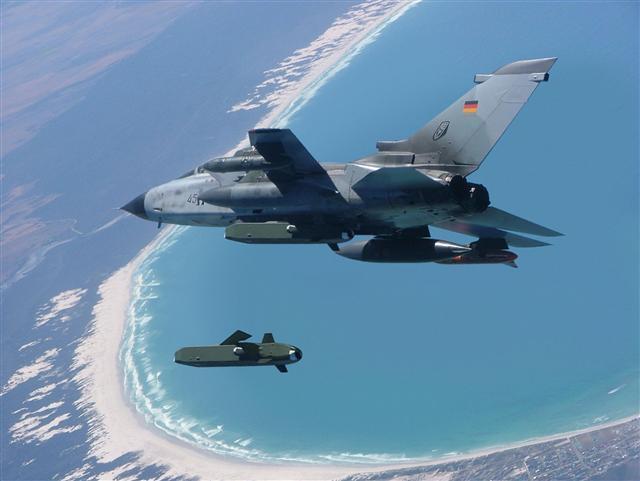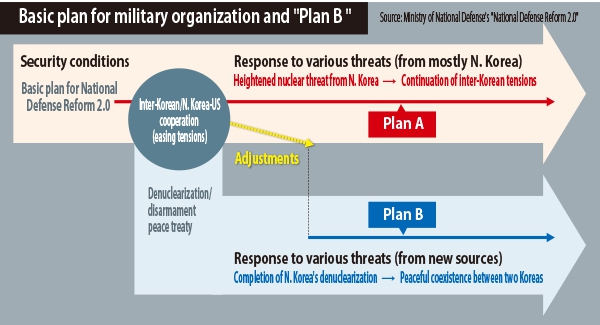Defense Ministry to adopt “Plan B” in case of N. Korea’s denuclearization and peace treaty signing

An image of the long-range, bunker-busting Taurus missile, a key asset in South Korea’s “Kill Chain” pre-emptive strike system. (provided by Taurus Systems)
It has been confirmed that the National Defense Reform 2.0 plan that South Korea’s Ministry of National Defense (MND) will present to the Blue House on Dec. 20 will include a “plan B” contingency plan to be adopted in the event of changes in security conditions and other affairs on the Korean Peninsula, including North Korea’s denuclearization and the signing of a peace treaty. This is the first time that the Defense Ministry has drafted a contingency plan alongside its basic plan for national defense.The MND also decided that its basic plan will include the “Korean-model three-axis system,” which it proposed as a key strategy to suppress North Korea’s nuclear program and other weapons of mass destruction, though the components of that system will be renamed to focus on their strategic deterrence capabilities. In line with this, the first component, called the “kill chain,” which refers to a preemptive strike on North Korea’s nuclear and missile facilities, will be replaced with “strategic strike,” while the third component, called “Korea Massive Punishment and Retaliation,” will be replaced with “overwhelming response.”
Basic plan for military organization and “Plan B “
A document about the current status of National Defense Reform 2.0 that the Hankyoreh acquired on Dec. 9 reveals that the MND is working on a “plan B” to replace the basic plan currently in place if North Korea is denuclearized and a peace treaty is ultimately signed.
The MND will be maintaining its current basic defense plan, which is predicated on the North Korean threat, but if that threat is reduced and new threats arise, such as a hegemonic clash between the US and China propelled by China’s growing military strength, the MND intends to switch over to Plan B.The Defense Reform 2.0 document contains the main points of the basic plan that the MND promised to submit to the Blue House in a completed form by the end of year when it announced the reforms this past July.
The MND expects that it will take between 5 and 15 years from its adoption to fully implement Plan B and achieve its objectives. By the time of its completion, it predicts that “the US will have announced North Korea’s denuclearization, and the North will be restrained from actually using nuclear weapons, while presumably retaining a latent nuclear capacity.”The MND believes that “after we enter the first structural phase of arms control, there could still be accidental clashes with North Korea on a small scale, but the likelihood of full-out escalation will be remote.
” That could be described as a situation in which South and North Korea have accumulated enough military trust that the possibility of war has basically disappeared.Under a shift to Plan B, some of the controversies that the MND expects to arise are changing the role and mission of US Forces Korea and adjusting the command structure of the ROK-US Combined Forces Command. Other potential debates mentioned in the document are adjusting the size of the standing army and the question of whether conscription should be maintained. In October, the Korea Institute for Defense Analyses (KIDA) put together a task force to carry out a conceptual study of the future vision of national defense.
This task force has been working on the details of Plan B on the assumption that there will be structural reforms of the military after denuclearization has taken place and a peace treaty has been signed.Another reason that the MND renamed the Korean-model three-axis system aimed at countering the threat of North Korea’s nuclear weapons and other weapons of mass destruction is because the original names were too focused on psychological warfare to adequately reflect the military’s actual capabilities and because the MND seeks to avoid provoking the North Korean unnecessarily at a time when inter-Korean military tension is decreasing.
But since the specific operations of these three-axis systems and the plan to enhance fighting power are being maintained, this is likely to be criticized as merely a cosmetic change.
